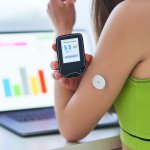Medtech: AI Can Detect Parkinson’s Disease From Night Breathing Patterns

Parkinson’s Disease is the world’s fastest-growing neurological disease. It’s also notoriously difficult to detect, largely depending for diagnosis on symptoms like tremors, stiffness, and slowness, which often only manifest years after the disease itself has begun to affect a patient. Now, a medtech device using artificial intelligence (AI) has been developed at MIT that can detect the disease much earlier, from a patient’s nocturnal breathing patterns.
As medtech develops, the uses to which it can be put will increase and diversify – particularly using AI for early diagnostics, allowing treatment to begin far earlier than was previously possible. It’s already being investigated for use in earlier detection of heart disease, applied to the investigation of the likelihood of stroke in susceptible patients, and even being used to significantly cut down the diagnosis time for rare diseases.
As well as being the world’s fastest growing neurological disease, Parkinson’s Disease is already the second most prevalent disease of its kind, behind only Alzheimer’s Disease. In the United States alone, it afflicts over 1 million people and carries an annual economic burden of $51.9 billion.
The Trouble With Detecting Parkinson’s
Parkinson’s Disease has always been a particularly difficult condition to diagnose before its symptoms manifest, because those symptoms are particularly diagnostic in and of themselves, and previously there’s been little that could identify the onset of the disease before those symptoms became apparent. It’s a disease that has no significant biomarkers to announce its beginning or mark its progress until the tell-tale symptoms are observed, and even then, things like tremors and stiffness can frequently be mis-attributed to other causes.
While some potential biomarkers have been identified, they involve getting at a patient’s cerebrospinal fluid, blood biochemistry, or neuro-imagery – each of which is either costly, invasive, or involves the technology of a specialized medical unit (and occasionally, all three). None of that seems especially worthwhile if you’re at a point significantly ahead of symptom development.
Now, a team from MIT (Massachusetts Institute of Technology) has developed an easy, non-invasive AI model that can detect Parkinson’s Disease from a patient’s nocturnal breathing patterns at home, without the need for complex, painful, or clinic-based observation.
What’s more, it can not only detect Parkinson’s Disease far earlier than the onset of the accepted symptoms, it can also estimate the severity and progression of the disease significantly in advance of those symptoms – potentially allowing for earlier preparation for the onset of the disease.
The Impact of AI
From the patient’s point of view, the diagnostic model involves recording one night’s sleep breathing on a breathing belt, which is worn on the chest or abdomen, or with a small signal emitter in the room.
From the technological point of view, the process involves the non-invasive recording of breathing records and a thoroughly trained neural network (a series of connected algorithms that replicate the way a human brain works).
The network assesses the nocturnal breathing records, and is able to output data on the presence, progression, and likely severity of Parkinson’s Disease in any patient.
To develop this non-invasive Parkinson’s detector, the team created a device that emits radio signals, analyzes their reflections off the surrounding environment, and extracts the subject’s breathing patterns, without any bodily contact. The breathing patterns are then fed to the neural network to assess the likely presence of Parkinson’s Disease, without any need to investigate the patient’s cerebrospinal fluid, which is necessarily a more invasive process.
The History of Parkinson’s
The assessment of breathing patterns as a diagnostic condition of Parkinson’s Disease is not a wild stab in the dark. The association between Parkinson’s Disease (or Shaking Palsy, as it was originally known) and breathing was originally made by the eponymous James Parkinson himself in 1817, and was further supported in later work that recorded a degeneration in the areas of the brain stem that controlled breathing in Parkinson’s Disease patients.
But the use of a non-invasive measuring tool that assesses the breathing of potential Parkinson’s patients, and the AI model that can process that breathing data into diagnostic and predictive results, is entirely novel to the MIT team’s research.
The AI was trained using several large datasets of patient and non-patient experiences, both in terms of sleep breathing and indicators for various diseases, particularly Parkinson’s Disease. The datasets included data from the Mayo Clinic, the Massachusetts General Hospital (MGH) sleep lab, observational clinical trials for Parkinson’s Disease sponsored by the Michael J. Fox Foundation (MJFF) and the National Institutes of Health (NIH) Udall Center, among others. The combined dataset contained 11,964 nights with over 120,000 hours of nocturnal breathing signals from 757 Parkinson’s Disease subjects and 6,914 control subjects.
Parkinson’s Detection At Home
The result is an AI-based piece of medtech that looks set to revolutionize Parkinson’s Disease research by bringing early diagnostics into the home, rather than necessitating a trip to a potentially costly, invasive, and inconvenient clinic.
It’s true that you currently have to have some reason to suspect someone may be developing Parkinson’s Disease to try out the detector, and that there are no early warning signs that could lead you to do so. But as with many such devices in modern medtech, such as at-home detectors for atrial fibrillation, high blood pressure, and diabetes, the likelihood is that the detector will become commercialized and available as a ‘just in case’ piece of technology in the relatively short term.
It’s also true that at the moment, there is no cure for Parkinson’s Disease – though treatments exist to mitigate symptoms and allow patients a better quality of life. But the more data that is gained about the disease in its early stages, the greater the likelihood becomes of developing either a cure or a blocker that can free people from the worst of the disease’s eventual symptoms.
AI in medtech is developing a reputation akin to the original Enigma machine on which the first computing revolution was based. It allows for a great deal of computation and learning to take place in a relative fraction of the time that earlier, non-AI systems would have taken. As such, projects like the MIT Parkinson’s Disease detector are likely to snowball in both frequency and impact over the next two decades, advancing our medical understanding, and our treatment options, in ways we can yet only dream of.










